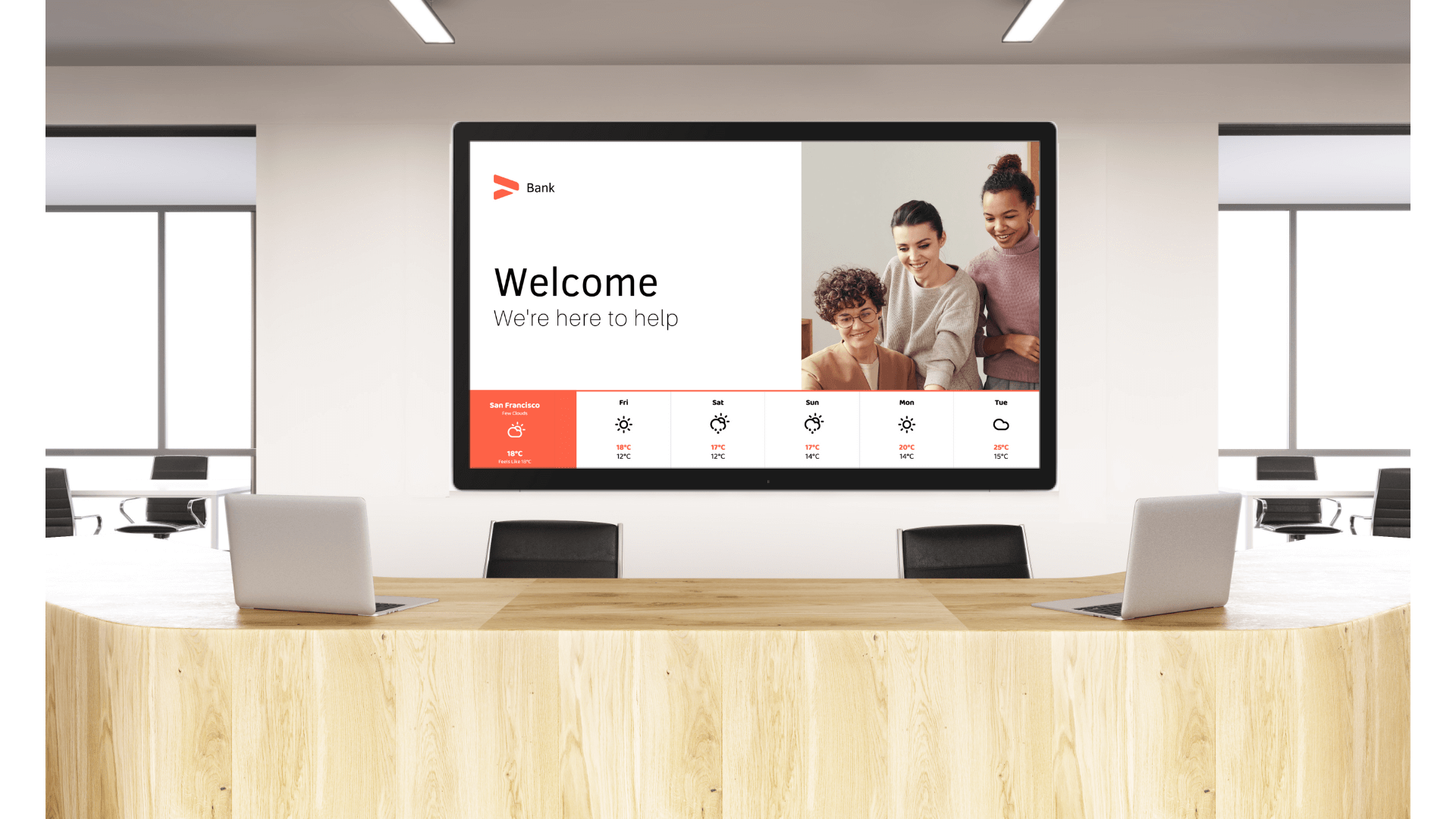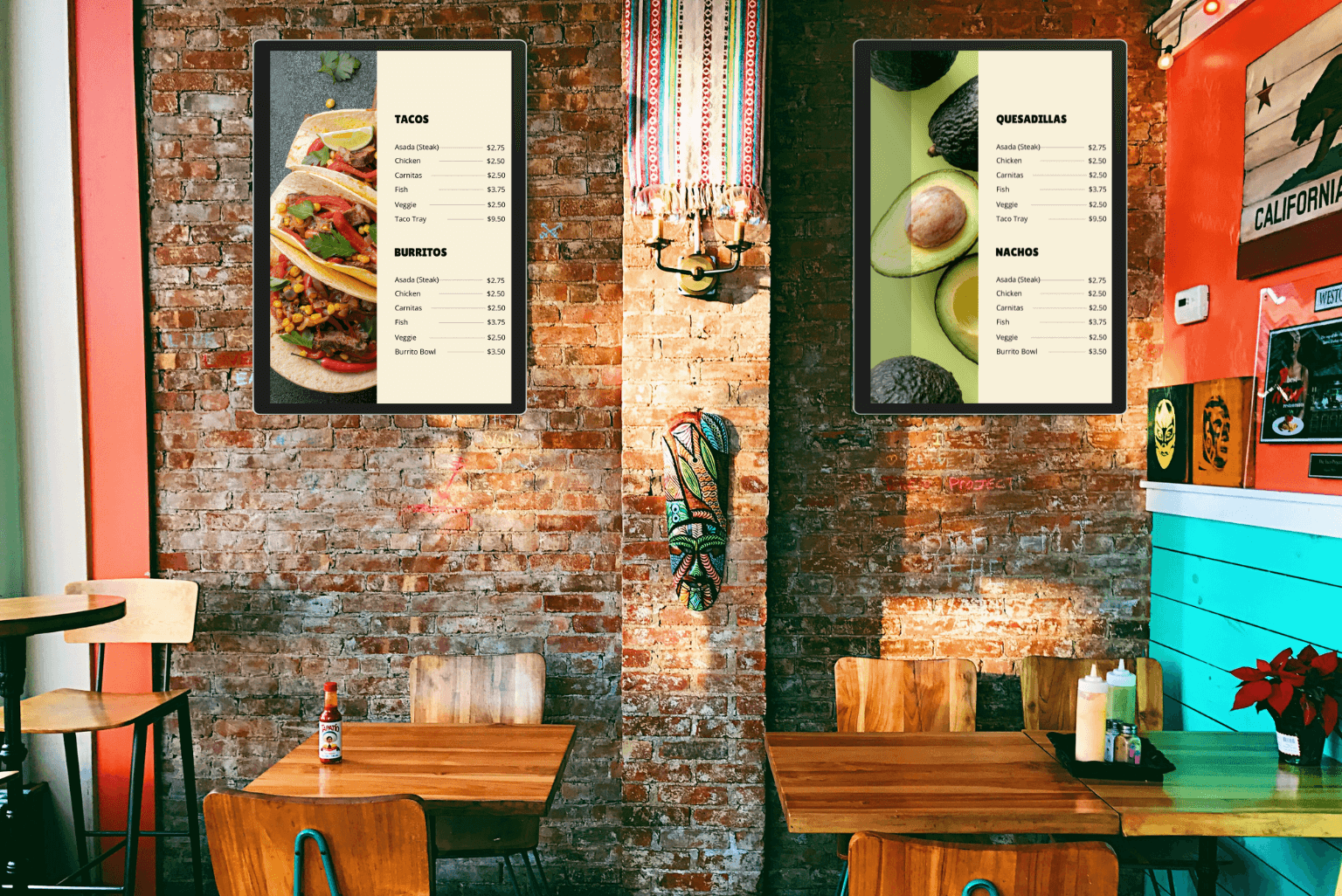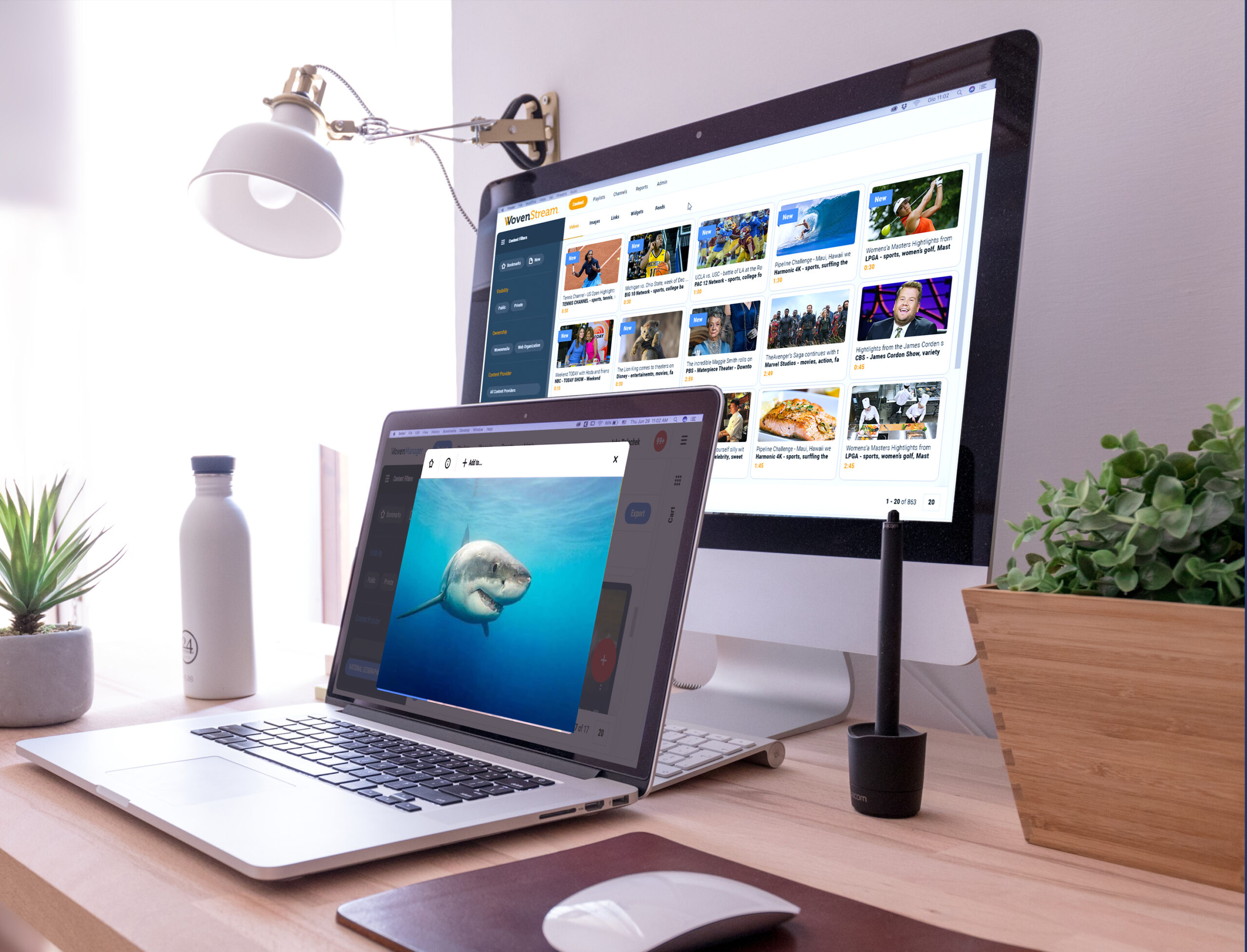What is Digital Signage and How Does it Work? Everything You Need to Know

- What is digital signage?
- What are the benefits of digital signage?
- How does digital signage work? Everything you need to know
- How do digital screens work? Components of digital signage
- Digital signage software
- The right hardware
- Engaging digital signage content library
What is digital signage? You’ve more than likely seen some form of “digital signage” throughout your life, even if you don’t exactly know what it means. In simple terms, it is any sort of digital screen or digital display that conveys content to inform, engage, and educate your audience.
What is digital signage?
If you live in an urban or suburban area, chances are you run into digital signage screens several times a week. And possibly several times a day. The screens can show what’s on the menu at your local fast-food restaurant, let you know the terminal for your next flight, give information about events in your area, or promote a new iPhone launch as you drive along the freeway. The list is endless.
These screens are everywhere. And the digital signage market is expected to reach USD 38.63 billion by 2030. This industry, also known as Digital Out-of-Home (DOOH), has a bunch of technology and people behind it. All making sure these screens do what they’re supposed to do – engage you, inform you, and help you make great buying decisions when you’re out and about in the world. But what exactly is digital signage and how does it work?
What are the benefits of digital signage?
You’ve probably noticed digital screens replacing paper signs over time. This is part of the technological evolution of all industries.
For example, your local taco joint replacing its paper menus with digital menu boards. Or your auto dealer swapping out paper for digital screens with the latest information on tire prices, wheel alignment, or brake maintenance.
There are many reasons for this shift but the most obvious are cost and flexibility. As digital signage solutions become more affordable, businesses are recognizing their many benefits.
1. Improved communication with customers and employees
People absorb visual content/information thousands of times better than in written form. Digital signage solutions can help improve communications with customers and employees. They can keep them more informed, entertained, and engaged. Especially with vital pieces of information.
2. Increased revenue
Digital screens help boost sales by highlighting promotions, discounts, and specials on products and services. Businesses can also increase ad revenues via endemic advertising. By partnering with third-party companies and playing their content on screens, monetizing the digital signage network.
3. Reduced perceived wait time
Digital signage is great for reducing perceived wait times in customers’ eyes. Screens placed across waiting areas can display entertaining content that’s much more pleasing than dusty magazines and traditional advertising.
4. Easy content modifications and revisions
Digital signage makes it affordable for businesses that regularly change their service offerings or their menu items. They can immediately update information – which cuts certain traditional operating costs.
5. Impressive modern appearance
Businesses must continually adapt to the current technological revolution by exposing themselves to software/tech solutions that wow their customers. All while sustaining usual business operations. With it, businesses show that they’re providing the best technological tools to serve customers.
Replacing paper with digital screens is operationally cheaper, virtually eliminates compliance problems, drives customer engagement, and ultimately, sales.
Think about it, you’re a retail chain and you have a price promotion for a new product in 100, 500, or even 1000 stores. How much easier is it to display this information on strategically placed screens in the relevant department than ship out 100s or 1000s of paper signs that each store has to receive and display correctly before the promotion runs out. An impossible task with a 0% chance of chain-wide success.



How does digital signage work? Everything you need to know
At the core, it’s about moving digital content from a server to a networked device. The media player can decode the digital signage content for display on a screen. It’s really that simple.
Whether the digital signage content is images, videos, RSS feeds, web pages, etc. The concept is the same.
To sum up, the building blocks for a digital signage network are:
- Software
- Media player
- Screen
- Content
- And some way of getting the digital signage content to the media player – usually the Internet.
How do digital screens work? Components of digital signage
There are several required elements when it comes to adopting and implementing digital signage. The main components are:
1. Digital signage software
Today’s advanced digital signage networks are powered by digital signage Content Management Systems (CMS) that allow for very sophisticated network programming. The CMS can integrate with media players and connect to screens for full control.
The software is a very important consideration for new digital signage initiatives. Some of the standard capabilities CMSs need include are:
- Targeting content to play in certain locations.
- Scheduling content to play at certain days/times.
- Content playback through audience interactivity or other external triggers.
- Monitoring and reporting of all network activity (proof-of-play).
2. The right hardware
Successful digital signage networks use professional-grade displays because they can run throughout the day (sometimes 24×7) for several years without breaking. Yes, more expensive than commercial TVs but well worth the investment in the long run.
Media players come in all shapes and sizes, running on different operating systems such as Linux, Chrome, and Android. You can go for a top-of-the-line 4K HDR player if the content quality is super important. A cost-effective opportunity to get started with Wovenmedia’s software without the need for an external media player is to use displays with built-in media players. They offer capabilities to store and forward information using the players’ internal storage and caching capacities to stream high-quality content on the display. The most important is to choose a media player that’s proven in large-scale deployments and is supported by your chosen content management software.
To successfully display digital signage content, you’ll need typical internet and wiring access. As well as wall or ceiling mounting fixtures to account for LCD, LED, or projection screens that’d display high-impact content to in-store customers/audiences. All these aspects need to be assessed beforehand to ensure a successful digital signage deployment.
3. Engaging digital signage content library
Digital signage is great for reducing perceived wait times in customers’ eyes. Screens placed across waiting areas can display entertaining content that’s much more pleasing than dusty magazines and traditional advertising.
It’s critical to lead with strategy, experience, and desired ROI when planning a digital signage deployment. The technology can likely support any desired outcome, but without a strategy, you’ll end up with a bunch of expensive tech that doesn’t achieve very much.
An important part of this is content. How much content do you need every week/month/year? Where is this coming from? Do you need to integrate the delivery with other systems such as point-of-sale (PoS)?
Digital menu boards and wayfinding rely much more on text and image, these are non-video networks. For this type of use case, the content question is much less of a challenge. Instead, they need to make sure the content displayed is data-driven and correct in every location. Digital screens need to show that today’s special really is $6.99.
For video-based digital signage networks, keeping content fresh, engaging, and relevant can be more challenging. In general, these networks are in high “dwell” areas where consumers are waiting for service or browsing merchandise. Healthcare waiting rooms, auto dealerships, and retail departments are examples of this. For these networks, it’s important to think about how to fill the programming pie. How to have enough content for a 30 or 60-minute loop that needs to be refreshed frequently.
The good news for video-based networks is that content production does not have to be done only in-house. The best strategy is to selectively produce your branded content and fill the pie with third-party digital signage content that resonates with your brand and audience. Just make sure any 3rd party provider you choose has rights-cleared content for Digital Out-of-Home.
Whether relying on the direct advertiser, third-party, or original in-home content – digital signs operations rely on a wide range of content. From interactive videos and aesthetic images to weather widgets, and more to use and display.
How is digital signage used?
1. Video display screens
The most common form of digital signage involves video screens displaying information and entertaining content through images, videos, text, widgets, and more. You’ll ideally catch these types of video display screens in waiting areas, entrances of buildings, and around product displays.
2. Interactive digital signs
Businesses can take their network one step further by engaging in-store customers. Audiences can personally interact with screens displaying content near service counters, check-out lines, and wherever else is deemed suitable.
3. Digital menu boards
Restaurants and fast-food services are leaning more towards using digital signs to power their menu boards. Digital signage screens reduce manual labor and allow them to quickly make changes to their menus. All while displaying deals, promotions, and visuals of what’s served.
4. Projected video
Projected digital signage can turn unused floors and walls into a dynamic, powerful, and new promotional platform. There are many opportunities for projected video in retail. For example, it can boost sales when placed next to related products. And help with wayfinding in large retail spaces while enhancing the shopper experience.
What businesses or industries can use digital signage?
Any business – no matter its size – can benefit from using this technology on their TV screens, but the main industries where we most commonly see solutions being used include:

Maximize success with digital signage
Whether you are testing the water with a new digital signage initiative or looking to upgrade an existing network. There are some great tech and digital signage content options out there that can soak up much of the heavy lifting. Software companies like Wovenmedia can help you with your digital signage deployment.
Ready to start your digital signage network?
Wovenmedia offers a complete solution to bring the power of video to your customers. From a creative content library to equipment purchasing, logistics, installation, and ongoing support.
Get in touch with our team of experts today to learn what you need to put in place and manage your digital signage network.




